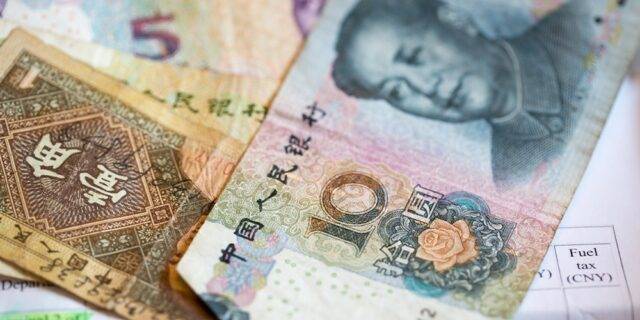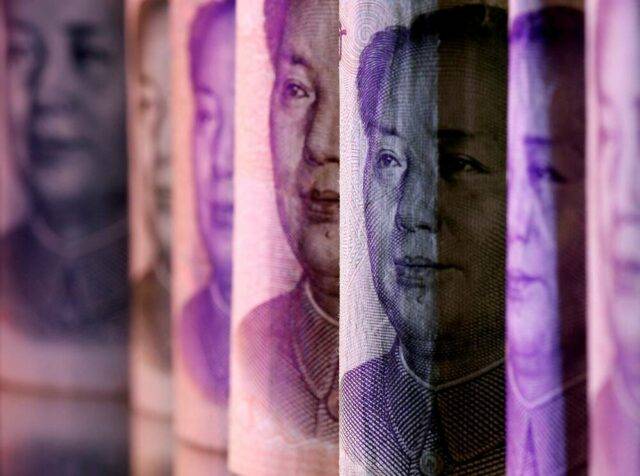How did China become a leader in developing digital currencies?

China is a world leader in developing a national digital currency. It is a project that has been worked on internally since 2014. The People’s Bank of China (PBOC) is spearheading work on the digital yuan, the so-called central bank digital currency (CBDC), which aims to replace some of the cash in circulation. Will CBDCs become a major trend in global finance this decade?
What is CBDC?
Over the years, interest in cryptocurrencies such as Bitcoin and Ethereum has multiplied. Cryptocurrencies have gained immense popularity because of their decentralised and unregulated nature, with some seeing their growth as a possible threat to the traditional banking system, which operates under the jurisdiction and control of a country’s regulatory body such as the central bank. That said, there is no clarity on any suitable reserve to support the valuation of the real value of digital assets, i.e. they cannot be valued with the same approach as, for example, corporate shares or any other traditional assets.
Unable to control the growth and impact of such cryptocurrencies, many leading central banks around the world are operating or planning to launch their own versions of cryptocurrencies. These regulated cryptocurrencies are called central bank digital currencies (CBDC) and will be managed by the relevant monetary authority or central bank of a particular country.
CBDCs will act as a digital representation of the country’s fiat currency and will be backed by a suitable amount of monetary reserves, such as foreign exchange or gold reserves. In other words, a CBDC is like a “centralised version” of Bitcoin or similar cryptocurrencies. The concept of central bank digital currencies is fairly new, with more or less visible progress in this area only in the last couple of years. And the leader among all central banks in the world so far is China – the Chinese government has so far made a lot of effort to adopt new blockchain projects and develop CBDC itself.
Pros and cons of CBDCs
In the 21st century, the world is rapidly becoming digital, which also affects finance – cashless payments are growing in popularity in many countries. If CBDCs are under the control of the central bank, then what are the differences between digital currency and traditional cashless transfers?
Perhaps the main difference between CBDCs is distributed ledger technology or DLT. To make cashless payments, banks have to store information about them in a database. Instead of one central database storing all financial transactions, DLT consists of multiple copies of this transfer history, each stored and managed by a separate financial institution, with the entire process controlled from above by the country’s central bank. These financial institutions share the DLT in a distributed manner.
It is a ‘closed’ blockchain because only a select few organisations can access transaction information and/or modify the blockchain. In addition, central authorities control who gets access to the blockchain and what they can do with it. With Bitcoin, on the other hand, the blockchain is completely open and not controlled by a central authority.
There are several major advantages to the CBDC concept:
- Cheap and secure. For organisations of all sizes, it is much more profitable to work with DLT than with cash payments. Transactions in CBDC will be much cheaper and with a higher level of security;
- Liquidity. CBDC will be able to provide financial transfers to commercial banks and other institutions much faster;
- Speed. CBDC transaction speeds will be thousands of times faster than Bitcoin due to blockchain centralisation;
- Efficiency. CBDC does not need a huge number of intermediaries for settlement;
- Competition. CBDC creates competition in the market for other banks and financial institutions. This leads to the attraction of depositing assets into the banking system.
Let us now turn to the disadvantages:
- Risk in case of collapse. CBDC increases the risk of a systematic mass withdrawal of funds from the bank. In a financial crisis, these banks are operating at a much faster capacity without geographical proximity or time. Additional compliance and monitoring under anti-terrorist financing laws may be required here;
- Challenges for commercial banks. Adoption of CBDCs could lead to higher deposit rates, causing some financial institutions to face problems;
- Other restrictions. Only the issuing country can adopt CBDCs (at this stage of infrastructure development).
In the context of Chinese government policy, CBDC integration has a huge number of advantages. It will enable the Chinese government to have even greater control over the financial flows of its citizens. In theory, this is necessary to reduce corruption in the country, but CBDCs can also be a formidable weapon to control the lives of hundreds of millions of people.
The first prerequisites for a CBDC in China
The digital renminbi project was launched by China’s central bank in 2014. At that time, the cryptocurrency market was not on such a high wave of popularity, with the government interested in a slightly different approach – fighting the dollar. Even then, international relations between the US and China were already beginning to be strained, as China’s booming economy had made China a significant force in the international arena.
Perhaps one of the most notable developments on China’s path to creating its own digital currency was President Xi Jinping’s announcement in October 2019. At the time, he announced that the country was taking a proactive approach to developing blockchain projects. The news also had a very positive impact on the crypto market.
In the same year, many large Chinese companies registered hundreds of blockchain patents. Among them are the following:
- Industrial and Commercial Bank of China (ICBC). This world’s largest bank by assets under management registered two new patents to facilitate customer transactions;
- Ping An Bank. Ping An Bank filed patents to develop data analysis systems and a DLT-based internal voting system;
- UnionPay. One of the world’s largest payment systems has also started working on blockchain solutions;
- Alibaba Group. The Chinese corporation has registered 90 blockchain patents at once. Alibaba Group is planning to implement blockchain in many of its subsidiaries;
- Tencent. The company that created the super-popular messenger WeChat, which has more than 1 billion active users, is developing its own Tencent Blockchain network and is also selling cloud-based blockchain services.
And, of course, the Chinese government itself. Government agencies hold the record for the number of patents accepted in the field of innovation. Blockchain is expected to be adopted in China’s legal, land, tax and other financial transactions. And that’s not even taking into account the fact that most of the Bitcoin mining computing power is located in the country.
China has indeed been the most attractive region for BTC miners for a very long time. The reason for this phenomenon is very simple – cheap electricity from environmentally harmful sources. By the way, the latter is also very often remembered by Bitcoin opponents as one of the main arguments against the cryptocurrency. Some experts believe that at one point China may even strike a blow to Bitcoin’s popularity by threatening to ban the cryptocurrency’s mining in the country. This has happened before and could happen again in the future, as one option to deal with “potential competitors” to CBDC.
What will China’s digital currency be like?
From a user perspective, CBDC is more like China’s existing commercial digital payment methods, such as Alipay and We Chat Pay: users download digital wallets in which they can store their funds, and which generate a QR code to be scanned by payment terminals in shops. However, the system is much more complex. The digital yuan is designed to replace cash in circulation, such as coins and notes, rather than money held in bank accounts for long periods of time.
Commercial banks will play a role in distributing the digital currency to users, and to do so they must deposit exactly the same amount of their reserves with the Chinese Central Bank as the amount of digital yuan they distribute. Both the commercial distributing banks and the central bank will maintain databases that track the flow of digital renminbi from user to user. As noted above, unlike cryptocurrencies such as Bitcoin, the digital RMB will not use an open blockchain – instead using distributed ledger technology, which allows transactions to be confirmed in a distributed form.
Another difference can also be highlighted between the digital yuan and Bitcoin – the supply of the currency. Bitcoin’s supply is limited to 21 million coins, a limit spelled out in the cryptocurrency’s protocol by its creator Satoshi Nakamoto and cannot be changed. The digital yuan, on the other hand, will have an unlimited supply, which makes sense: the central bank will thus be able to increase or decrease the amount of national currency in circulation depending on the state of the economy.
CBDC testing in China
In 2020, a great chunk of information about the digital yuan began to appear online – a sign that the national project was approaching the final stages of its testing. In April 2020, the Chinese messenger WeChat showed screenshots of an app that was supposedly a wallet for the digital yuan. The screenshots showed some of the app’s functions: a wallet, a QR code payment function (a popular payment method in China), receiving and sending money, as well as “pairing” the wallets of two users for a transaction via device proximity (probably using NFC technology).
A few days later, Chinese Central Bank officials confirmed the authenticity of the screenshots. Some interesting details were also revealed, such as the fact that testing of the digital yuan has already started at an active stage and is taking place in cooperation with some of the largest commercial banks.
More recently, China announced the next stage of expanding CBDC testing. Prior to that, the digital currency has already been tried out in the form of a lottery – 10 million digital yuan was distributed to random citizens. Each winner received 200 digital yuan, which could be spent at more than 3,000 retail outlets in one of Shenzhen’s busiest areas. After just a couple of weeks, almost all the money was spent and local banking institutions reported the success of the experiment.
The full-scale launch of China CBDC is expected to take place in 2022. We are already talking about regular use of digital currency across most of the country. Naturally, such developments will definitely be a trigger for other states. It is quite possible that the US will also be more active in developing the digital dollar concept.
Can the digital yuan beat the dollar?
As recently as last year, US Treasury Secretary Steven Mnuchin said that the government was not going to issue a digital currency yet. The Americans are happy with the current state of affairs: the dollar remains the world’s dominant currency, so spending money on a digital dollar project seems inexpedient. However, the question of developing its own CBDC in the U.S. is still open.
For now, the digital yuan lives only as a test project. It is not necessarily that it will actually launch – the Chinese government often changes its approach to blockchain. But even if it does become a reality, despite all its advantages, the renminbi simply does not yet have the potential to seriously contend for the dollar’s place. Even digitally, it will remain a Chinese currency – with all the pros and cons.
The value of the renminbi is also exaggerated. Its turnover in international trade is only 4.3 percent, including transfers between China and Hong Kong. At the same time, 88 per cent of all international transactions were conducted in US dollars in 2019. Meanwhile, the US currency held 61 per cent of the world’s foreign exchange reserves last year, while the renminbi held just 1.96 per cent. It is unlikely that the digital RMB could capture significant market share, even with all its advantages.
The RMB is not a freely convertible currency and its exchange rate is substantially limited by government intervention. The authorities are not too keen on changing the situation – an increase in demand for the currency would hit local exporters hard. Hence the modest interest of traders and investors in the currency. As long as the Chinese authorities manipulate and undervalue the currency, the renminbi cannot be regarded as a global reserve currency.
Conclusion
China’s CBDC as a means to fight a trade war with the US has so far had little effect. The digital currency has little political weight, is still being tested and is unlikely to become too widespread in the coming years, even within China itself. Many experts believe it will take at least another five years for the world to fully appreciate the benefits of the Chinese government’s blockchain innovation initiative.
Either way, Bitcoin remains the dominant cryptocurrency. And in the last few months, the price of BTC has risen almost five-fold! Don’t miss your chance to profit from the growth of the crypto market – mine Bitcoin with Hashmart.io!









